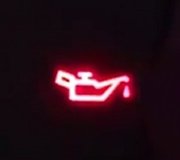TROUBLESHOOTING LOW OIL PRESSURE
A good place to start your diagnosis of a low oil pressure condition is at the dipstick. Check the oil level to see that it is at the proper level (not low and not overfilled). If low, the engine may be burning oil, leaking oil and/or be neglected. Adding oil may temporarily remedy the low oil pressure condition, but unless the oil level is properly maintained by your customer the problem may reoccur.
If the engine is leaking oil, recommend new gaskets or seals to fix the leak. If the engine is burning oil, the valve guides and seals are most likely worn, but the rings and cylinders might be bad, too. A wet compression test and/or leakdown test will tell you if the valve guides or rings and cylinders are worn. The least expensive fix in the case of worn guides would be to install new valve guide seals (if possible) without pulling the head. But the best fix would be to pull the heads and have the guides lined, knurled, replaced or reamed for oversized valve stems. Worn rings and cylinders would call for a complete overhaul.
Also note the condition of the oil and make sure it is the correct viscosity for the application. Heavier viscosity oils such as 20W-50, straight 30W and 40W may help maintain good oil pressure in hot weather, but are too thick for cold weather driving and may cause start-up lubrication problems especially in overhead cam engines. Light viscosity oils, on the other hand, such as straight 10W or 5W-20 may improve cold weather starting and lubrication, but may be too thin for hot weather driving to maintain good oil pressure. That is why most OEMs today recommend 5W-30 for year-round driving in modern engines.
If the oil level is okay, the next thing to check would probably the oil pressure sending unit. Disconnect the unit and check the warning lamp or gauge reading. If the warning light remains on with the sending unit disconnected, there is probably a short to ground in the warning lamp circuit. Likewise, if there is no change in a gauge reading the problem is in the instrumentation not the engine.
Bad oil pressure sending units are quite common, so many technicians will replace the unit without checking anything else to see if that cures the problem. This approach might save you some time, but it is risky because unless you measure oil pressure directly with a gauge attached to the engine you have no way of knowing if pressure is within specifications or not. Most warning lamps won't come on until oil pressure is dangerously low (less than 4 or 5 lbs.). So don't assume the absence of a warning lamp means oil pressure is okay, especially if the engine is making any valve or bearing noise.
If a check of oil pressure reveals unusually low readings, check the filter. It is possible the filter might be plugged with gunk. Ask the customer when he last had the oil and filter changed. Or, replace the filter and see if that makes a difference.
The next step would be to drop the oil pan and check the oil pump pickup screen. If the screen is clogged with debris, you have found the problem. Also, check to see that the pickup tube is properly mounted and positioned, firmly attached to the oil pump (no leaks) and is not obstructed.
If the oil pump is mounted inside the crankcase, the next step might be to remove and inspect the pump. Open the pump cover and measure clearances. Also, check for scoring or other damage. A broken pump drive would tell you something entered and jammed the pump. If the pump is worn or damaged, replacement is the only option.
If the pump appears to be okay, the next step would be to measure the rod and main bearing clearances. Check the clearances on the main bearing closest the pump (since this has the greatest effect on pressure), and clearances on the furthest rod bearing (since this will show the greatest wear). If the bearings are worn, they need to be replaced. But before you do so, carefully inspect and measure the crankshaft journals to check for wear, scoring, out-of-round and taper. If the journals need attention, the crank will also have to be reground or replaced.
Other checks might include camshaft end play, and/or pulling a valve cover or the intake manifold to check the cam bearings and lifters. Remember, excessive clearances or leaks anywhere in the engine's oil supply system can contribute to low oil pressure
SPONSORED LINKS
Sunday, March 15th, 2009 AT 1:25 AM

